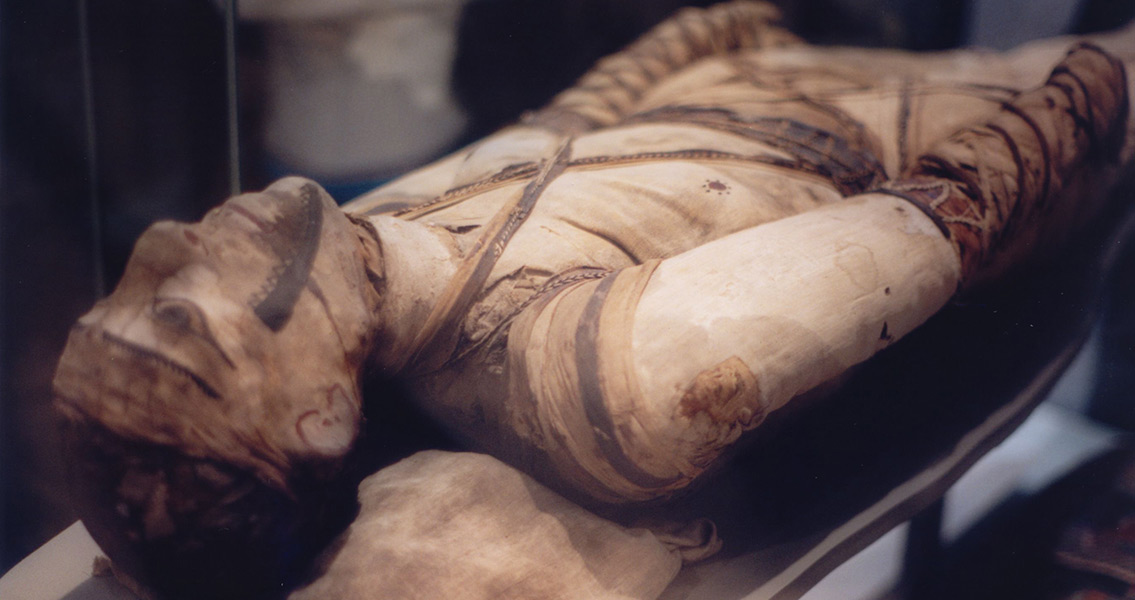<![CDATA[The remains of an Egyptian person who lived 3,200 years ago have revealed a never-before-seen method of mummification. According to researchers who utilized computed tomography (CT) to look inside the mummy, there is some type of sediment inside the skull along with, even more surprisingly, the woman’s brain. Experts had never seen this specific combination prior to this discovery. The fact the brain had not been removed from the skull suggests to experts that the individual lived sometime during the New Kingdom (between the sixteenth and eleventh centuries BCE) because mummies created later always had the brain removed. Gender has not been positively determined either, due to the fact that the pelvic bone, typically used to identify gender, has collapsed. The skull however, suggests the mummy is of a young woman. Scanning took place at the Stanford University School of Medicine in California and was overseen by Jonathon Elias, the director of the Akhmim Mummy Studies Consortium. Experts have used this CT facility previously to scan the remains of human mummies and crocodile mummies. This latest mummy to experience the high-tech examination is called Hatason, although researchers don’t believe this is to be the mummy’s actual name, but rather a nickname given to it sometime after death. The mummy arrived in San Francisco (from Egypt) in the late 1800’s to be displayed in the 1894 California Midwinter International Exposition, afterwards the mummy became part of a collection at San Francisco's de Young Museum. The ancient body now resides in San Francisco, at the Legion of Honor museum. Researchers theorize that the name Hatason was given to the mummy by whoever first sold it in the 1800s. The name is likely supposed to bring to mind queen Hatshepsut, who reigned as an Egyptian pharaoh in 1478 BCE, according to experts. The experts however, are quick to point out that this mummy was not royal. Her coffin portrays a woman wearing the standard garments of an everyday resident, although it’s possible the coffin the mummy is in wasn't theirs originally: mummy buyers at that time were known for reusing coffins arbitrarily. Although the scans are still being scrutinized, the initial peek inside the mummy has definitely revealed some strange details aside from the material found in the head cavity. For example, no amulets were found in the mummy’s wrapping, just a metal tack typically used by museum curators to hold the wrappings together, and the bones were all topsy-turvy inside the wrappings, which still held the shape of an ancient woman’s body. According to Elias it’s probable someone was experimenting with different mummification techniques at the time which would explain adding sediment to a skull along with the brain. It's the type of detail that could only be seen using CT analysis without ruining the mummy. It’s especially valuable given the lack of mummies from this time period, so each small technological advance increases researcher's ability to learn more about the past. Image courtesy of Wikimedia Commons user: Klafubra]]>
Scan Reveals New Method of Mummification
